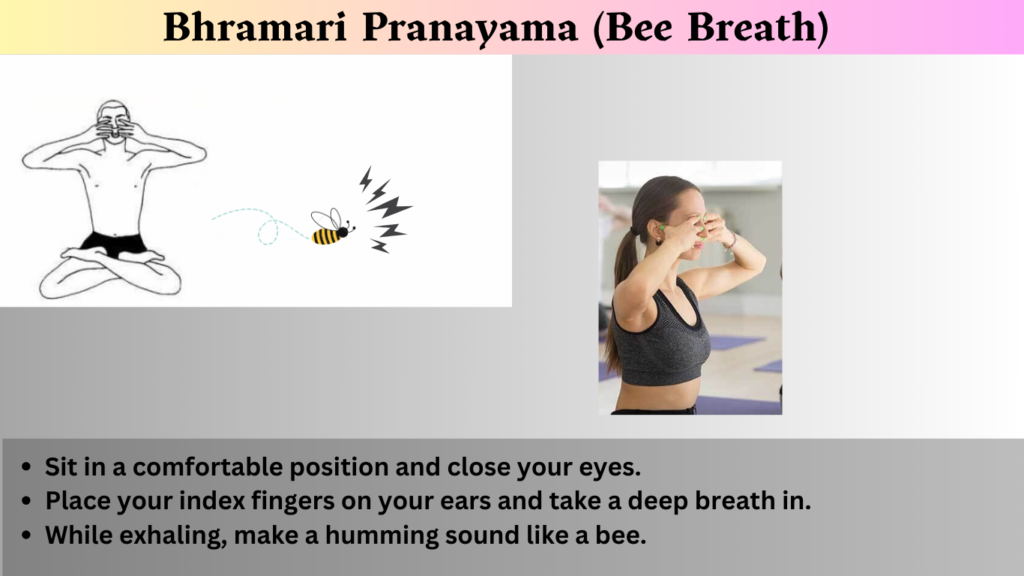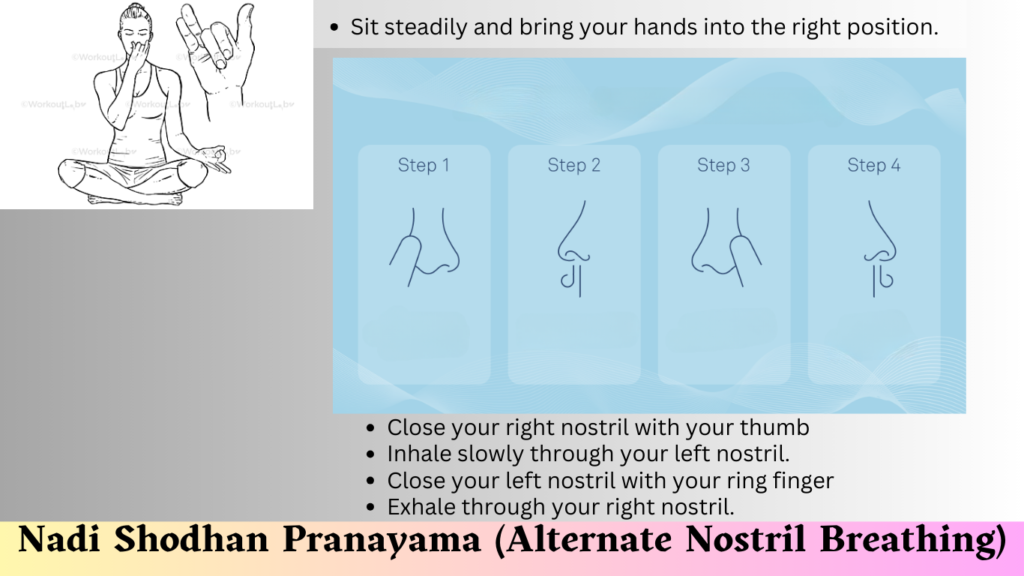If you’re seeking to steer your life in the right direction, maintain good health, and achieve mental calmness, incorporating good habits into your daily routine is essential. One such powerful habit is the practice of Pranayama. Today, we will delve into five Pranayama practices that can greatly benefit you.
The Importance of a Good Posture

Before we begin with the exercises, it’s crucial to understand the importance of sitting in the correct posture. According to Hathayogi scriptures, you must sit with your back straight to maximize the benefits of Pranayama. A straight posture helps prevent laziness and restlessness, ensuring that you stay focused and calm during your practice. You can sit in Siddhasana, Padmasana, or even Sukhasana, but remember to keep your spine straight.
Nadi Shodhan Pranayama (Alternate Nostril Breathing)

Start your routine with Nadi Shodhan , also known as alternate nostril breathing. This practice helps purify the energy channels in your body, ensuring a smooth flow of life energy (Prana). Here’s how to do it:
1. Sit steadily and bring your hands into the right position.
2. Close your right nostril with your thumb and inhale slowly through your left nostril.
3. Close your left nostril with your ring finger and exhale through your right nostril (Summer).
4. Inhale through your right nostril, then close it and exhale through your left nostril(Winter).
5. Repeat this cycle for several minutes.
This practice helps calm the mind, reduces anxiety, and improves concentration. It is particularly beneficial for those dealing with migraines, insomnia, and high levels of stress.
Bhastrika Pranayama (Bellows Breath)

1. Sit in a comfortable position with your back straight.
2. Inhale deeply, expanding your abdomen.
3. Exhale forcefully through your nose, contracting your abdomen.
4. Start with a slow pace and gradually increase the speed after a month or two of practice.
This practice can alleviate symptoms of insomnia, reduce migraine occurrences, and promote mental clarity.
Bhramari Pranayama (Bee Breath)

Bhramari is a calming practice that is incredibly useful for students and those who work long hours on computers. It helps soothe the mind and improve concentration.
- Sit in a comfortable position and close your eyes.
- Place your index fingers on your ears and take a deep breath in.
- While exhaling, make a humming sound like a bee.
- Repeat this for 10-20 cycles.
Kapalbhati Pranayama (Skull Shining Breath)

1. Sit with your back straight and focus on your lower abdomen.
2. Exhale forcefully through your nose while pulling your navel in towards your spine.
3. Allow the inhalation to happen passively and naturally.
4. Perform this exercise in short, powerful bursts for 3-5 minutes.
This practice helps detoxify the body, boost metabolism, and improve overall digestive health.
Chandra Bhedi Pranayama (Moon Piercing Breath)

Finally, Chandra Bhedi helps cool the body and calm the mind, making it ideal for managing anger and reducing body heat.
1. Sit comfortably with your back straight.
2. Close your right nostril with your thumb and inhale deeply through your left nostril.
3. Close your left nostril and exhale through your right nostril.
4. Repeat this cycle for several minutes.
Chandra Bhedi is excellent for calming the nervous system and balancing the body’s natural rhythms.
Conclusion
By incorporating these practices into your daily routine, you can experience profound benefits for both your physical and mental health. Regular practice will lead to noticeable improvements in your overall well-being within just a month. Stay committed, and you’ll find yourself healthier, calmer, and more balanced.
If you have any questions or need further guidance, feel free to leave a comment. We will continue to provide insights on other important topics in future posts.
FAQs:
Q1: What is Pranayama?
Q2: Why should I incorporate Pranayama into my daily routine?
Q3:Why is posture important in this?
Q4: Which postures are recommended for Pranayama?
Q5: What is Nadi Shodhan Pranayama?
Q6: How do I practice Nadi Shodhan Pranayama?
2.Close your right nostril with your thumb and inhale slowly through your left nostril.
3.Close your left nostril with your ring finger and exhale through your right nostril.
4.Inhale through your right nostril, then close it and exhale through your left nostril.
5.Repeat this cycle for several minutes.
Q7: What are the benefits of Nadi Shodhan Pranayama?
Q8:What is Bhastrika Pranayama?
Q9: How do I practice Bhastrika Pranayama?
2.Inhale deeply, expanding your abdomen.
3.Exhale forcefully through your nose, contracting your abdomen.
4.Start with a slow pace and gradually increase the speed after a month or two of practice.
Q10: Are there any precautions for Bhastrika Pranayama?
Q11:What is Bhramari Pranayama?
Q12:How do I practice Bhramari Pranayama?
2.Place your index fingers on your ears and take a deep breath in.
3.While exhaling, make a humming sound like a bee.
4.Repeat this for 10-20 cycles.
Q13: What are the benefits of Bhramari Pranayama?
2.Place your index fingers on your ears and take a deep breath in.
3.While exhaling, make a humming sound like a bee.
4.Repeat this for 10-20 cycles.
Q15: How do I practice Kapalbhati Pranayama?
2.Exhale forcefully through your nose while pulling your navel in towards your spine.
3.Allow the inhalation to happen passively and naturally.
4.Perform this exercise in short, powerful bursts for 3-5 minutes.
Q16: What are the benefits of Kapalbhati Pranayama?
Q17: What is Chandra Bhedi Pranayama?
Q18: How do I practice Chandra Bhedi Pranayama?
2.Close your right nostril with your thumb and inhale deeply through your left nostril.
3.Close your left nostril and exhale through your right nostril.
4.Repeat this cycle for several minutes..


